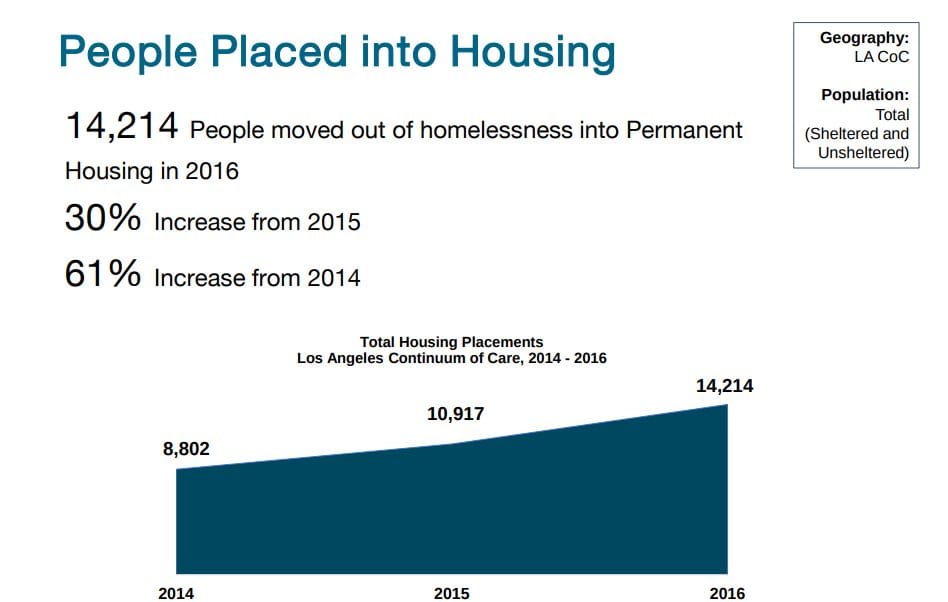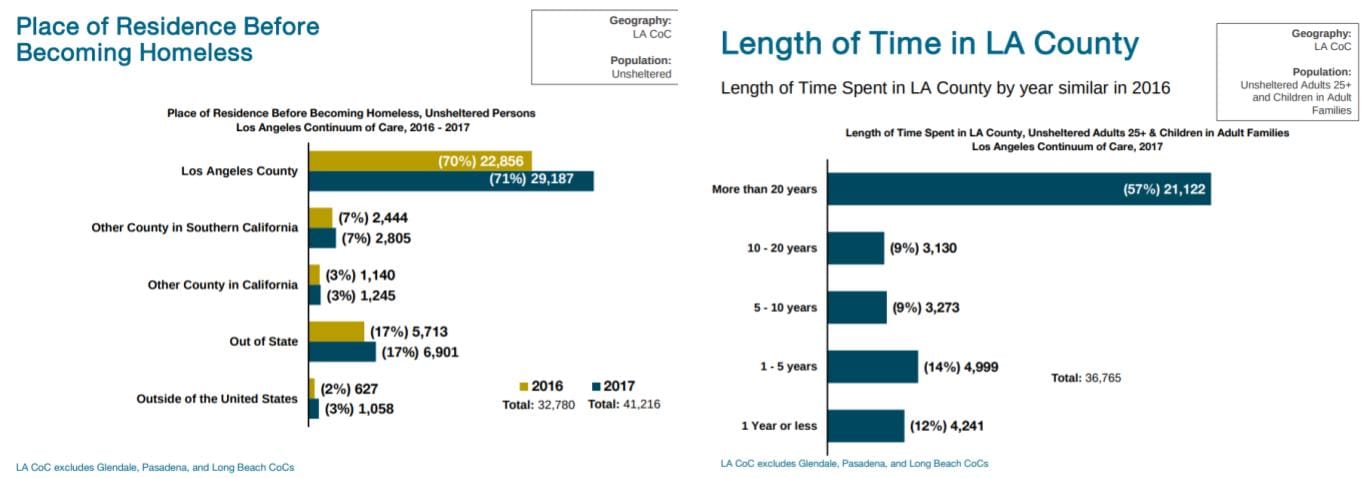The numbers from L.A. County’s recent homelessness count released Wednesday revealed a bleak picture, with the number of people sleeping on the streets, in shelters, or in their cars jumping 23 percent to 57,794.
The numbers also revealed that Santa Monica’s recent uptick in the number of people experiencing homelessness — up 26 percent from 2016 and the highest it has been since 2009 — is part of a troubling regional trend.
“Staggering and sickening news. Even as we are housing and providing services to more people than we ever have, homelessness in Los Angeles County continues to climb – dramatically,” Los Angeles Councilmember Mike Bonin wrote on his Facebook page Wednesday in response to an L.A. Times story about the increase. “The sheer human misery is mind-boggling, and the impact on virtually every neighborhood in Los Angeles is tremendous.”
Bonin’s council district borders Santa Monica on three sides and includes Venice Beach, where the rise in the number of people experiencing homelessness has been particular visible.
“[I]t is abundantly clear that we will… not end homelessness until we stop creating homelessness through lack of economic opportunity, a slashed safety net, and skyrocketing housing prices. We will not end the homelessness crisis in Los Angeles until we end the housing crisis in Los Angeles,” Bonin wrote.
Wages are staying flat and rents continue to skyrocket in a region that is one the most severely rent-burdened in the country due largely to a massive lack of affordable housing, according to the Los Angeles Homeless Services Authority report released Wednesday.

As Bonin noted in his comments, two major factors contributing to the rise of the number of homeless people are the continually skyrocketing cost of housing and the lack of wage growth.
The increase in the number of people bedding down on L.A. County’s streets has come in spite of the fact that the number of people moving out of homelessness into permanent housing has gone up as well.
The numbers also reveal that the majority of people experiencing homelessness in L.A. County are from L.A. County, belying the myth that the reason homelessness is a problem in the region is due to migration.
In fact, homelessness among a number of groups increased, including people in families, which increased by 23 percent, veterans, which increased by 57 percent, and children, which went up by about 44 percent.
According to the report, 3,658 of unsheltered adults (25 and older) and children in adult families are currently fleeing violence.
The Los Angeles metro area’s extraordinarily low vacancy rate for rental housing disproportionately hurts low income people because it forces them to compete with higher income renters for the same, artificially limited pool of housing stock.
This dynamic plays out with increasing intensity in the metro area’s most desirable places like Santa Monica where decades of slow- or anti-growth policies have severely restricted housing growth in a city where there is a high concentration of jobs, education opportunities, and services.
The scope of the problem is staggering. According to the report, there is a region-wide shortage of more than half-a-million affordable homes.
Based on current rates of project approvals, it would take Santa Monica 60 years to build its share — about one percent — of the current affordable housing need.
Of course, a significant proportion of people struggling with homelessness are also struggling with not only poverty but also chronic mental health issues.
Making housing more affordable alone isn’t enough to help these people who also need, in addition to shelter, ongoing support services.
The city of Los Angeles recently passed Measure HHH, authorizing $1.2 billion in bonds to pay for the construction of permanent supportive housing. That is buttressed by the passage of the county-wide Measure H, a sales tax increase that would raise about $355 million annually to pay for services to help those struggling with chronic homelessness.
Still, the solutions are still a long way off as new housing takes a while to get built and funds to be allocated.



